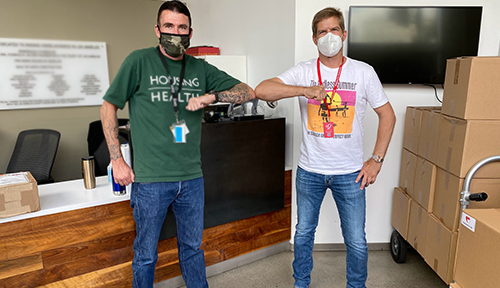An active volunteer program is the backbone of many membership organizations, whether for serving on committees or in other situations; but recruiting, training, and retaining successful volunteers is increasingly a challenge for many associations. How to address these concerns will separate successful associations from their less successful peers.
Bostrom once conducted a workshop entitled Volunteer Relationship Management and Support for the Association Forum in which a group of executives, from professional societies and trade associations [both large and small], responsible for working with volunteers in a variety of capacities such as committees or boards, focused on issues of recruitment, training, recognition, and accountability.
A recurring theme discussed throughout the workshop was the need for volunteers to be carefully oriented and systematically trained, that the more successful programs using volunteers had carefully constructed systems of volunteer development. An example of this was identification of volunteers and volunteer leaders and providing them with training and experiences to make certain that they were well-prepared to assume increasing levels of responsibility, sometimes over the course of several years. Workshop participants noted, however, that this type of approach often required a commitment on the part of volunteers increasingly pressed for time and increasingly less able to devote time to their association, thereby created a real conundrum.
What is to be done? Recognizing the value of systematic training for volunteers, participants agreed that it is imperative to ensure that associations make the highest and best use of volunteer time. Participants were reminded that when a board or committee holds a meeting, the costliest item is not airfare or the hotel bill; rather, it is the time of the volunteers sitting around the table. Workshop participants agreed that it is critical that staff prepare the work so the volunteers are able to do their job effectively.
A structural change that has achieved considerable success has been to move from standing committees that require a long time commitment [often ranging from one-to-three years] to a task force approach where the task force is disbanded when it accomplishes its assignment. Many volunteers are more comfortable with this shorter arrangement.
An emerging technique that is increasingly made possible by newer technologies is micro-volunteering. Unlike traditional volunteer commitments, a micro-volunteer might have an afternoon, or sometimes only an hour, to devote to the organization. And while the old adage still applies that “volunteer time isn’t free,” in that it must be coordinated, typically by association staff, web-based applications now exist where a volunteer may sign-up, be scheduled, receive a confirmation, a reminder, and a thank-you, all with minimal or no staff involvement. For example, a member might wish to volunteer to sit at a registration desk for a morning, the arrangements to be handled by the micro-volunteering website.
While no single magic bullet exists to deal with this issue, creative association executives may draw upon a variety of approaches to fit the needs of their volunteers.





